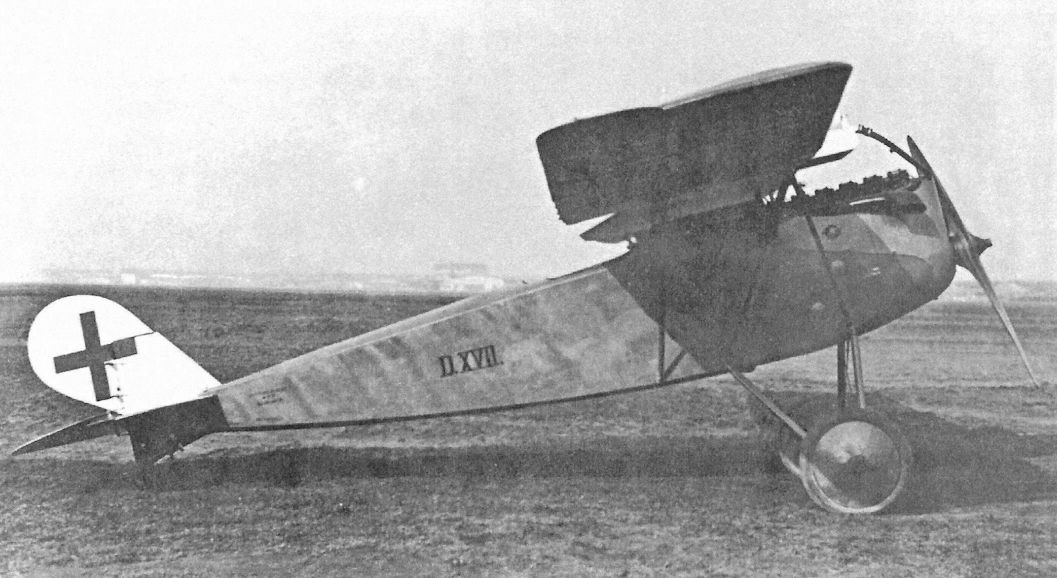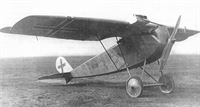
Описание
Страна: Германия
Год: 1918
Fighter
Варианты
- LFG Roland - D.XVI - 1918 - Германия
- LFG Roland - D.XVII - 1918 - Германия
- O.Thetford, P.Gray German Aircraft of the First World War (Putnam)
- W.Green, G.Swanborough The Complete Book of Fighters
- J.Herris Roland Aircraft of WWI (A Centennial Perspective on Great War Airplanes 9)
-
J.Herris - Roland Aircraft of WWI /Centennial Perspective/ (9)
The Roland D.XVII fighter powered by the 185 hp BMW.IIIa competed at the Third Fighter Competition.
-
W.Green, G.Swanborough - The Complete Book of Fighters
Last of the Roland single-seat fighters, the D XVII was flown just before the end of World War I.
-
J.Herris - Roland Aircraft of WWI /Centennial Perspective/ (9)
During the Third Fighter Competition the Roland D.XVII fighter competed against the Fokker V29 parasol monoplane derivative of the Fokker D.VII; both fighters were powered by the 185 hp BMW.IIIa.The Fokker V29 was a superior fighter and was co-winner of the competition with the Rumpler D.I biplane. The Fokker V29 wing design was superior structurally and aerodynamically to the Roland wing and gave better flying qualities with greater strength. Moreover, by late 1918 the competitive situation between German fighter manufacturers was much more difficult than just Fokker's excellent designs. Little-known companies like Kondor designed a new, excellent parasol monoplane, their E.III & E.IIIa, with strong wings and good flying qualities. SSW and relative newcomer Daimler also delivered new parasol monoplane fighters of exceptional performance, with Daimler's V-8 finally reaching production and powering its entry. Aviatik, from whom little had been heard for a long time, had started production with its D.VII biplane powered by the Benz V-8 that also finally achieved production after prolonged development. Rumpler's D.I biplane was in low-rate production as were the all-metal Junkers D.I monoplane and the all-metal, stressed-skin Zeppelin D.I biplane, which had the most advanced structure of any WWI aircraft. And the Pfalz D.XV biplane, considered equal to the famous Fokker D.VII, had reached production and the first aircraft were already arriving at the Armee Flug Parks at the Armistice.This flood of excellent new fighters simply overwhelmed the less creative designers at Albatros and Roland, who were frankly unable to compete despite their intense focus on new fighter development.
-
O.Thetford, P.Gray - German Aircraft of the First World War /Putnam/
The last of a long line of LFG Roland fighters, their D XVII single seater was fitted with a 185hp BMW IIIa. Little reliable data survives on this machine, which is reported to have taken part in the second of the 1918 fighter trials. Note the position of the radiator, mounted to project forward of the wing centre section leading edge. This allowed the engine to be more smoothly cowled, but whether the radiator's position encroached upon the all-important fighter need for excellent forward pilot visibility is difficult to judge from this image.
O.Thetford, P.Gray German Aircraft of the First World War (Putnam)
L.F.G. Roland D XVII
Last of the long line of Roland lighters was this D XVII parasol monoplane. It utilised the same type of fuselage and engine installation as the B.M.W.-powered D XV prototype. Engine, 185 h.p. B.M.W. III. Armament, twin Spandau machine-guns.
Описание:





